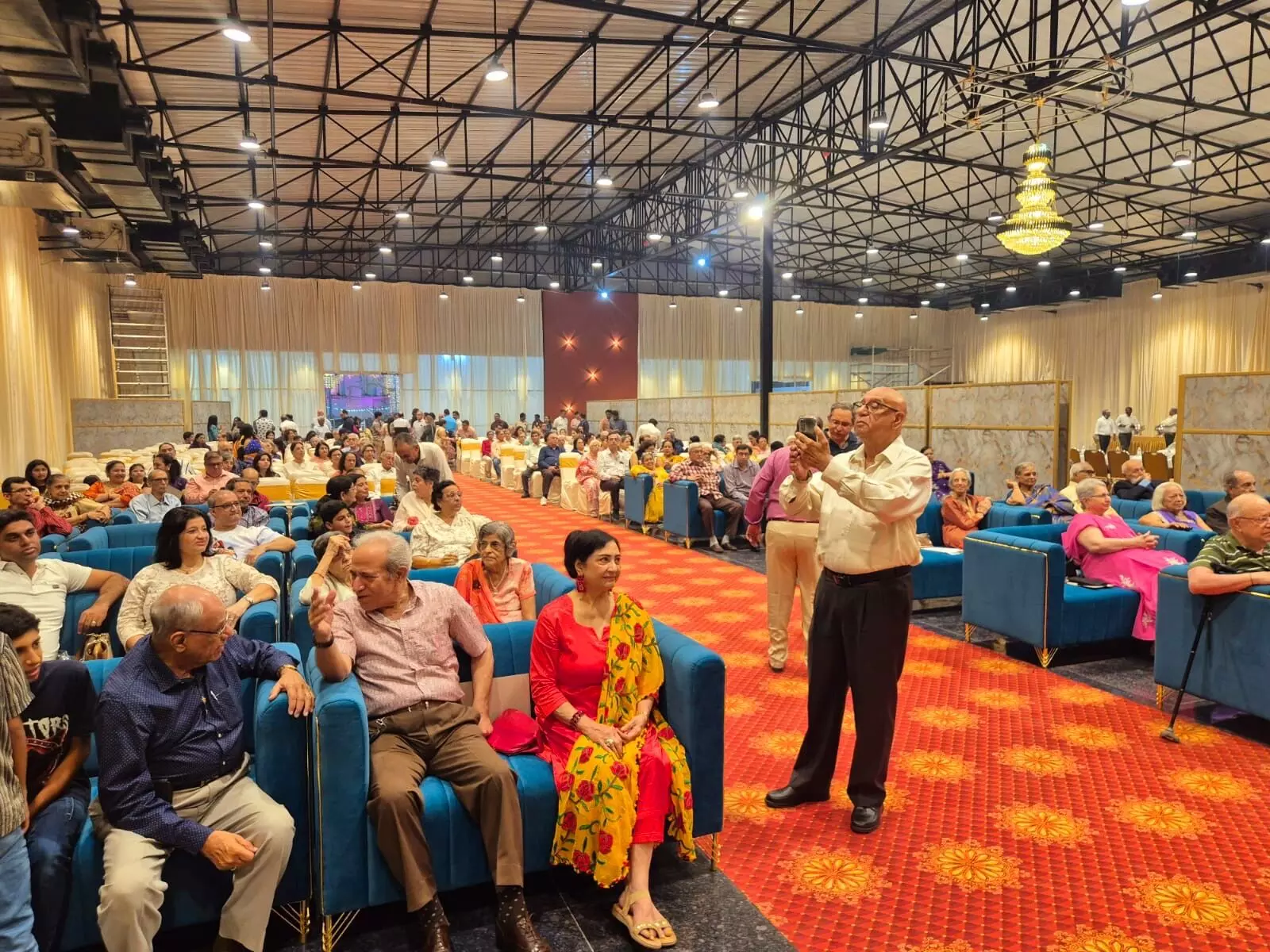Navroz celebrations in Hyderabad highlight Parsi history and traditions
Parsis of the twin cities attended in good numbers to meet and greet each other
By Beyniaz Edulji
Navroz celebrations in Hyderabad highlight Parsi history and traditions
Hyderabad: This year Parsis of Hyderabad and Secunderabad had two reasons to celebrate August 15. It was their New Year (Navroz) as well as Independence Day.
Celebrations at Zoroastrian Club
Flag hoisting was held at the Zoroastrian Club in the morning, followed by a thanksgiving prayer or Jashan ceremony at the nearby Khan Bahadur Edulji Sohrabji Chenai Anjuman fire temple on Mahatma Gandhi Road.
Parsis of the twin cities attended in good numbers to meet and greet each other. Everyone appreciated the spectacular flower arrangements of hydrangea and heliconia in the fire temple which were meticulously created by Khoty Chenai.
In the evening, there was a grand function at the Zoroastrian Club, which was established in 1931.
Housie was played, and a prize distribution was organised for who won. Academic scholarships were also distributed.
Dinner followed with a vast array of dishes: Haleem, Tandoori chicken, the Parsi favourite-Sali Marghi (Chicken with potato straws), Fried Fish, Mutton Biryani and a dessert of Lagan Nu Custard, which is so rich and delicious that it is generally served at Parsi weddings.
History of Parsis in India
Parsis are those Zoroastrians who migrated to India from Persia (Iran) between the 8th and 10th Centuries.
They originally spoke Farsi, but they adopted the Gujarati and some Indian traditions, although they still maintain their separate ethnic identity in India.
Parsis may just be the world’s earliest environmental warriors as they take care never to pollute the elements of Fire, Air, Water and Earth. Fire is especially sacred to Zoroastrians.
Many centuries ago, Zoroastrians left Persia in small boats to escape religious persecution, but they could not take their Holy Fire with them.
They settled in Diu for some years and later set sail again. The first boat, led by their High Priest, landed in the tiny village of Sanjan in Southern Gujarat after a storm around 720 AD.
He led his people to the local ruler named Jadhav Rana, to ask for permission to settle there. The king looked at the tall warrior-like men and showed them a vessel full of milk to signify that there was no place in his kingdom for the newcomers.
The High Priest mixed some sugar in the milk to show that his people would only sweeten the land that gave them shelter. This impressed Jadhav Rana so much that he gave them permission to settle in Sanjan.
The locals started calling the Persian settlers Parsis, either because they came from Paras in Persia or because they spoke Farsi, which sounded like Parsi to the Gujaratis.
Thus began a long and happy integration between the Gujaratis and Persians. Parsis began to speak Gujarati and the women wore saris draped in the Gujarati style.
Even the food of the Parsis took on a slight Gujarati flavour with Parsis adding a touch of sweetness to their dishes.
First Fire Temple in Gujarat
During the storm at sea, the Persians vowed to build a fire temple which they consecrated from 16 different sources such as a brick-maker’s kiln, a goldsmith’s fire, a baker’s oven, a shepherd’s house, a king’s house and a bolt of lightning.
It took three years to purify this fire, and after that it was placed in the Sanjan fire temple.
Later, it was shifted to Barhot Caves, Navsari, Surat, Valsad and finally to the little village of Udvada in South Gujarat in 1742. This fire burns brightly and continuously in the Iranshah in Udvada from then until now.
This is the Holiest Fire Temple in India as the fire has been burning continuously for more than 1,200 years. Most Parsis go back to Udvada almost every year, a kind of return to give thanks to the Holy Fire in coastal Gujarat, where it all started 1,300 years ago.
The Parsis are around 50,000. Parsis of Hyderabad and Secunderabad are only a thousand, but their contribution to society far exceeds their minuscule numbers.